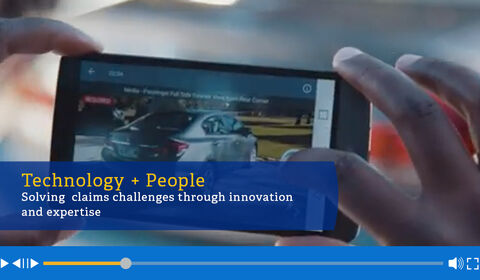At Crawford, we believe our people are our brand – and are the most effective channel for communicating with our clients.
Insurance has a central role to play in addressing some of the biggest challenges the world is facing today – from climate-related natural catastrophes to economic uncertainty and supply chain risks – and the purpose of insurance industry is to help its clients through difficult periods. But one area where the claims sector can do better is in communicating the full value of what it can do for its customers.
At Crawford, we’ve been on a journey over the past few years to amplify the impact of our own marketing and communications (marcom) activities. While in the past, the commercial insurance market has arguably not been as mature as other business-to-business (B2B) sectors when it comes to its marcom strategy, more companies in our industry are building their brands by connecting it more directly with what they stand for in new ways.
Doing marcom well and getting your brand top of mind, does require investment. This is a fundamental hurdle that the industry needs to acknowledge if its approach to self-promotion is to change. You need to invest in your communications and marketing abilities to see results. At Crawford, for example, we have increased our resources and grown our marcom team and have experienced a notable uplift in coverage of our business as a result.
In the B2B space, the best marcom strategies are ones that are not just about the company as a whole – but about people and the experience they deliver. While the B2B space is very different to consumer-packaged goods or the business-to-consumer (B2C) space, our goal is the same as those sectors; to encourage prospective customers to buy our products and services.
To paraphrase the famous quote from advertising legend Jerry Della Femina:
“Nothing kills a bad product quicker than good marketing.”
In other words, if your marketing of a product or service is highly effective but the product itself or the service you deliver is poor, then ultimately you are amplifying its shortcomings to a wider audience.
A large part of the value of Crawford’s offering comes from the talent we employ and that is why we believe our brand is our people. As such, our people and the services they provide are a significant part of our marcom strategy.
If we break down the notion of marcom into its constituent parts, on the one hand you have the paid element – the marketing part – which is largely about getting your brand in front of clients. Communications, on the other hand, is predominantly about relationship building – and people are central to any approach to relationship building, whether on a one-to-one or a one-to-many basis.
You can have a great website, great promotions via sponsorships and digital marketing, but if you’re not communicating the value of your brand at a grassroots level – by direct communication between your people and your clients – then the story you are telling can appear a little superficial.
Given that we believe our people are our brand, it is essential that we not only communicate that to our customers but involve our people in that communication and empower them to be comfortable in speaking about what we do as a company.
Our employees are a vital part of our communications because they are the ones who are out there, day after day, servicing our clients and their policyholders and other stakeholders. They have direct experience of how effectively Crawford can deliver a consistent story that is also relatable to every individual who hears it. When we are launching a new initiative, therefore, we must ensure that it not only speaks to our clients but that we can market it to our own people first. Communicating with our salespeople and client-facing colleagues is the most important part of the battle to increase brand consideration, winning new business and retaining existing clients.
Before I joined Crawford, I worked in the B2C sector as the head of marketing and communications for a leading manufacturer of mattresses, where our customers were mattress retailers. I’ve often said that our products were successful in part because of the “kindness of strangers.” What I mean by that is we had to make sure the people in retail stores selling our products were evangelists for the product and the brand.
Similarly, in the insurance world, our client-facing people have to be evangelists for everything that Crawford offers – our success is in their hands in many ways. In both cases, the power of communicating the value of the company’s brand to the end client is reliant upon successful relationship building.
That brings me back to the role of marketing and communications. Where those functions sit within an organization varies from one company to another, but, for example, with a global brand like Coca-Cola, marketing is front and center of what the company does – it’s like the singer or lead guitarist of a rock band.
At a company like Crawford, the role of marketing and communications is to make sure that everyone is moving at the same rhythm. To continue the rock music analogy, I see our team as being more like the bassist of the band – someone who is not so much in the limelight, but rather keeping up a steady rhythm that helps the rest of the band keep in time and lets them shine.
Effective marketing and communications empower our client-facing people to confidently convey our message. I’m proud of the progress our team has made over the past several years to make us more of a strategic partner, involved at the business and leadership level, but also driving that steady rhythm of communication throughout the organization to build a team of 10,000 Crawford brand evangelists across the globe.



